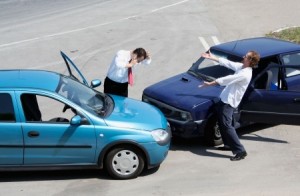 Many car accidents are low speed impact ones that do not result in a lot of property damage. Our roads are so congested we’re often playing bumper cars with each other and experiencing or witnessing minor crashes. If you’re on the road a lot, you may see a number of these on any given day.
Many car accidents are low speed impact ones that do not result in a lot of property damage. Our roads are so congested we’re often playing bumper cars with each other and experiencing or witnessing minor crashes. If you’re on the road a lot, you may see a number of these on any given day.
Here’s what not to do if you’re involved in a minor wreck:
1. We Don’t Need the Police! Well, yes you probably do need the police! Investigating agencies (Florida Highway Patrol, Sheriff’s Department, local police departments) generally do not like to get involved in investigating a crash if: (1) the property damage is under $500 and, (2) there are no injuries. First and second, how can you detect if the damage is under $500 when a plastic taillight cover costs $600, and how do you know you’re not injured? If in doubt, call the police – for no other reason than to have the officer determine that you weren’t at fault, and the other guy or gal was. This will simplify with insurance issues regarding car repairs, etc.
2. No Backtalk! If you know you’re not at fault in the crash, but the investigating police officer is writing you a citation, do not argue with him or her even after you’ve told them what happened. I’ve had several clients who get into arguments with a cop and trust me, it’s not worth it. This can result in more tickets, or even worse, an arrest. Take the ticket, plead not guilty and have your day in court. Many traffic citations are thrown out of court for a variety of reasons – including the fact that you’re not guilty;
3. Move It! If the two cars only show a minor amount of damage, it is okay to move your cars off of the roadway. Some believe that you must leave your car where it was hit – even if it’s rush hour on a two lane road. If you do this, you will sustain a good bit of harassment from passing cars stalled in traffic for a long time, you might even have things thrown at you as one client did. The Florida Statutes even mandate moving vehicles when it is safe to do so and traffic patterns warrant it.
4. No Mr. Nice Guy! Just because your car damages doesn’t look so bad, do not allow the at-fault driver to minimize this and try to blow it off as nothing. First, even though the car looks okay, are you sure you are? Always err on the side of caution and get as much information from the other party that you can. Personal identification, insurance information, car information. If the other driver is particularly ornery and drives away, take cell phone photos of the other driver, his or her car and the license tag.
5. To E.R. Or Not To E.R.? If you’re walking around after a car crash and have no obvious injuries, lacerations or head wounds, should you go by ambulance to the Emergency Room? The fine folks at the ER are looking for internal injuries, broken bones and bloody wounds. Short of that, an ER visit will cost you much time and lots of money. If you take the ER cab ride (also known as an ambulance) you can tack on another $600 – $800. If you think you’re medically stable, politely decline the ambulance and ER and go see your family physician as soon as possible. And that’s even if you think you’re okay – you’re not a doctor, get checked out.
While all of this sounds like common sense, you’d be amazed how many new clients arrive in our office totally unprepared. They’re hurt, their car doesn’t work, they’re missing work, yet they have very little information about the person who put them in this position. It is important to document from the very beginning to preserve your legal rights.
Image source: vukx / 123RF Stock Photo








